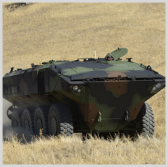 The U.S. Marine Corps has adopted a low-risk approach to acquire a new amphibious combat vehicle by opting for commercially available technologies, the National Defense Magazine reported Friday.
The U.S. Marine Corps has adopted a low-risk approach to acquire a new amphibious combat vehicle by opting for commercially available technologies, the National Defense Magazine reported Friday.
“The recognition of needing to go with something that was low risk — meaning relatively commercially available — so that you could get a new vehicle into the fleet sooner … was a very good decision,†said Dakota Wood, a senior research fellow for defense programs at the Heritage Foundation.
Angelo Scarlato, ACV product manager at USMC, said program officers pursued the new vehicle platform by identifying issues related to previous initiatives.
“One of the most important lessons learned … is having stable and achievable requirements,†Scarlato said.
“In this program the requirements have never changed or altered, and they tested to what they said they would test to. … That and the open communication with the vendors I think was critical,†he added.
An industry team consists of BAE Systems and Italy-based Iveco won a potential $1.2B contract in June to build ACVs for the Marines under the ACV program’s increment 1.1.
The contract has an initial value worth $198M and includes 30 low-rate initial production ACVs.
The Marine Corps plans to purchase up to 204 vehicles under ACV 1.1 that is slated for full-rate production by the middle of fiscal 2020 and full operational capability by late 2022, according to the report.
The service intends to procure up to 490 vehicles under ACV 1.2, which is expected to enter the critical design review phase in fiscal 2019, with plans to fully deploy both increments by 2027.




